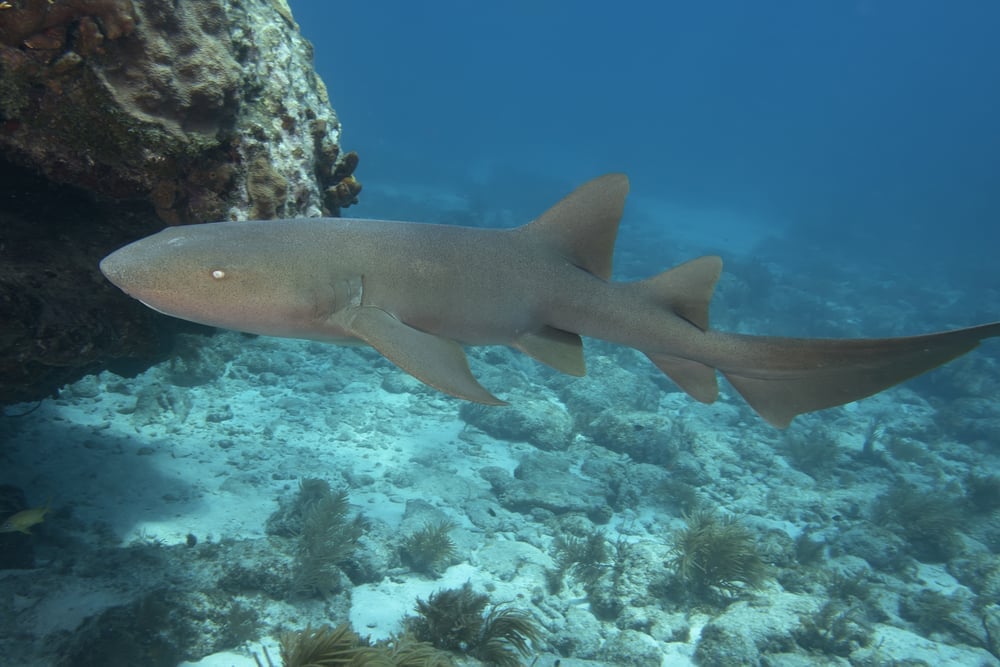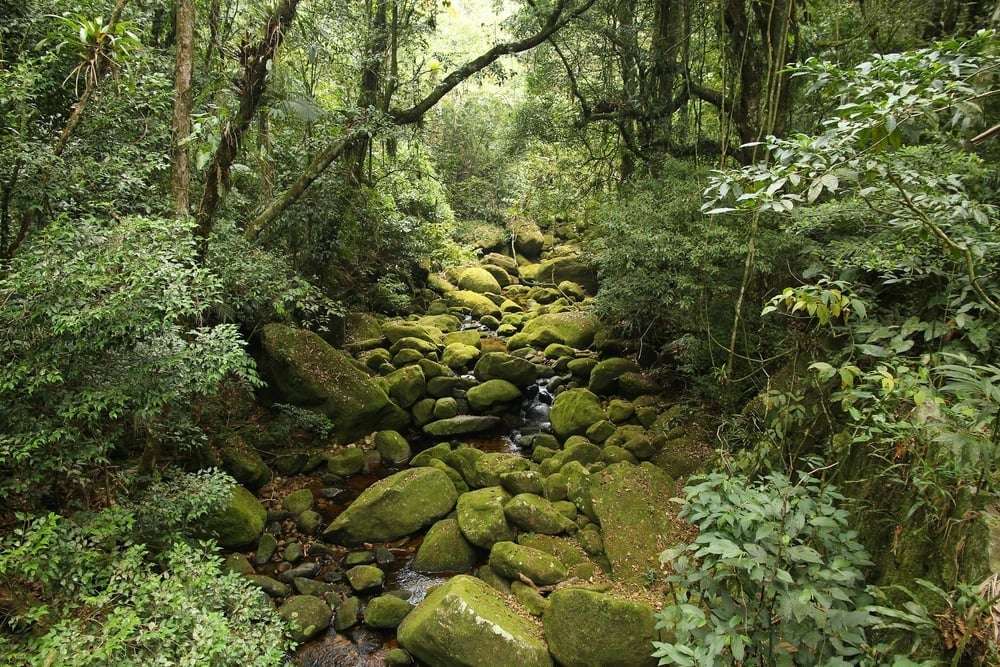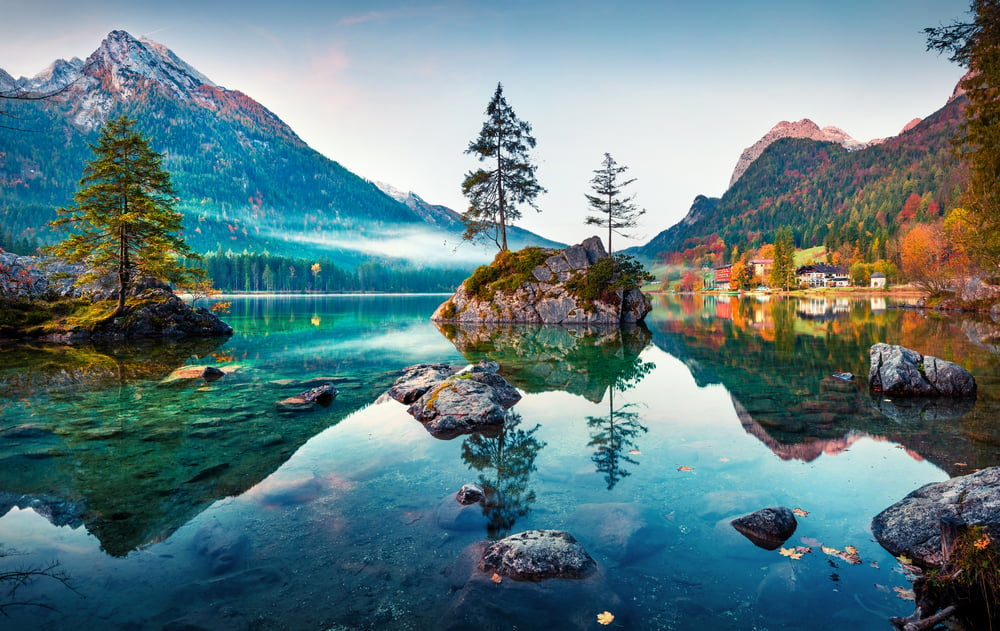
Biomes are large geographical areas characterized by specific climatic conditions, vegetation types, and wildlife. Although the number of recognized biomes can range from 9 to 26 depending on the classification system used, they are broadly categorized into two main groups: terrestrial and aquatic biomes.
Major Terrestrial Biomes
1. Forest Biomes

Forests cover about one-third of the Earth's surface and contain significant biodiversity. There are three primary forest biomes:
Tropical Forests (including Tropical Rainforests): Found near the equator, these forests are characterized by warm temperatures and substantial rainfall, typically over 2000 mm annually. They support a high diversity of species and lack seasonal changes, with no distinct winter[2][4][10].
Temperate Forests: These forests experience distinct seasons, including a winter season. They can be found in regions like North America and Europe, featuring a mix of deciduous and evergreen trees[2][10].
Boreal Forests (Taiga): Characterized by cold, dry conditions, boreal forests are primarily composed of coniferous trees. They exist in higher latitudes where they endure long, harsh winters and short summers[2][3][9].
2. Grassland Biomes

Grasslands are predominantly open regions dominated by grasses. They are classified into two main types:
Tropical Grasslands (Savannas): These biomes, located near the equator, have warm temperatures and seasonal rainfall. They are characterized by scattered trees and rich wildlife, including large herbivores like elephants and zebras[2][3][7][11].
Temperate Grasslands: Found further from the equator, these grasslands have pronounced seasons with hot summers and cold winters. They are known for their fertile soils and typically have few trees, primarily existing alongside rivers[3][4][9].
3. Desert Biomes

Deserts are defined by their low precipitation, generally receiving less than 50 cm (20 inches) of rain per year. They can be further classified into:
Hot and Dry Deserts: These deserts are found in subtropical regions and can experience extremely high temperatures[1][2].
Cold Deserts: Located at higher latitudes or altitudes, these deserts are characterized by cold winters and relatively low precipitation[3][10][11].
4. Tundra Biomes
The tundra is recognized as the coldest biome, characterized by extremely low temperatures and limited biodiversity. There are two main types:
Arctic Tundra: Located in the northernmost regions, this tundra has a permanently frozen layer of subsoil called permafrost. Vegetation is limited to mosses, lichens, and small shrubs[2][4][7][8].
Alpine Tundra: Found at high elevations in mountain regions, this biome shares similar characteristics with arctic tundra but can experience slightly milder temperatures during summer[3][9].
Aquatic Biomes

Aquatic biomes cover about 75% of the Earth's surface and include both freshwater and marine environments.
1. Freshwater Biomes

Freshwater biomes are characterized by water bodies with low salt concentrations (less than 1%). Major types include:
Lakes and Ponds: These still water bodies host diverse ecosystems, including various aquatic plants and animals such as fish and amphibians[3][8].
Rivers and Streams: Flowing water bodies that support unique ecosystems. They are often characterized by their current and flow patterns, which affect the types of flora and fauna found within[7][11].
Wetlands: Areas where water covers the soil or is present at or near the surface for at least part of the year. Wetlands can include swamps, marshes, and bogs and are crucial for biodiversity[4][10].
2. Marine Biomes

Marine biomes encompass saltwater environments, making up the largest biome type. They include:
Oceans: Covering roughly three-quarters of the Earth's surface, oceans are vast bodies of saline water that harbor a complex array of ecosystems[6][10].
Coral Reefs: Among the most biodiverse ecosystems on the planet, coral reefs are found in warm, shallow waters of the tropics. They serve as crucial habitats for numerous marine species[2][4][10].
Estuaries: Transitional areas where freshwater from rivers meets and mixes with saltwater from the ocean, creating rich habitats that support diverse life forms[3][9][10].
Conclusion
The classification of biomes is crucial for understanding the Earth's ecosystems, their functions, and the relationships between various species and their environments. As climate change progresses and human activities impact natural habitats, the study of biomes becomes fundamental for conservation efforts and maintaining biodiversity. Each biome, from the lush tropical rainforests to the arid deserts, plays a distinctive role in supporting life on Earth, exhibiting unique adaptations in both vegetation and wildlife. Understanding these biomes helps in formulating strategies for preserving these environments amidst ongoing environmental changes.
Get more accurate answers with Super Pandi, upload files, personalized discovery feed, save searches and contribute to the PandiPedia.
Let's look at alternatives:
- Modify the query.
- Start a new thread.
- Remove sources (if manually added).